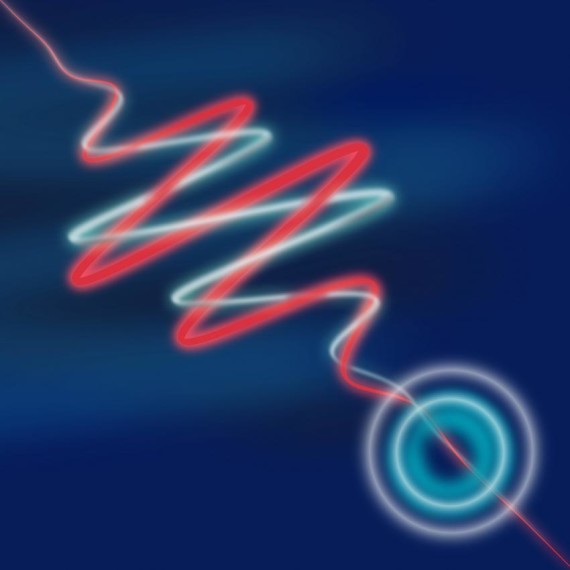One day in 1924, a young French noble managed to turned quantum physics on its head, just as it was finding its feet. Even the most conservative physicists were beginning to accept the duality revolution: light is not only a wave, but also behaves like a beam of particles (photons), as Einstein had established with his explanation of the photoelectric effect, which earned him the Nobel Prize in 1921.
Then Louis de Broglie (15 August 1892 – 19 March 1987)—a novice scientist whose first degree was in history—thought otherwise: what if particles also behaved like waves? A century ago there were still questions as attractive as this, to which one might dedicate a doctoral thesis. And that is exactly what de Broglie did. After studying in depth for several years the bases of quantum physics established by Max Planck and Albert Einstein, he presented his thesis in 1924 with an important theoretical discovery: electrons behave as waves and, not only that, all particles and objects are associated with matter waves.
From Einstein’s support to experimental demonstration
This is the well-known de Broglie Hypothesis. Putting together Planck’s equations (quantization of energy: E = hν) and Einstein’s (special relativity: E = mc2), de Broglie calculated what the length of these matter waves associated with each particle would be, depending on its velocity and mass. Thus, according to de Broglie, our whole world is quantum, not just light—a conclusion so bold that it was immediately rejected by many physicists, and ignored by others.
Although in 1924 his scientific career was still short, when he presented his doctoral thesis the French physicist had already done other research, which had led him to clash with some of the most influential physicists of the moment. Not so with Einstein, who enthusiastically supported de Broglie’s conclusions, but even Einstein’s support was not enough to prove him right: his hypothesis had to be experimentally demonstrated.

If the electron were a particle that behaved like a wave, then it would have to show typical properties of waves, such as diffraction and interference. And then some very strange things would happen: for example, one electron would be able to traverse two different holes at the same time. This was demonstrated by the electron diffraction experiment of Davisson and Germer (1927), thus confirming the hypothesis of de Broglie, who was awarded the Nobel Prize for Physics in 1929, just five years after he had presented that bold doctoral thesis.
First step to the electron microscope
Few doctoral theses in the history of science have been so dazzling that they have reached the Nobel with the same work that gave the author the title of doctor. Another great example is that of Marie Curie. Incredibly, Louis de Broglie, with his first great scientific research, succeeded in laying one of the pillars of quantum physics: the wave–particle duality, which states that waves can behave like particles and vice versa. From his idea of matter waves was born wave mechanics, the new formulation of quantum physics that Schrödinger developed to apply to atoms and molecules. And admitting the wave properties of electrons was the basis for inventing the electron microscope (released in 1932), which allows us to see things much smaller than typical optical microscopes permit, because the wavelength of the electron is much shorter than that of photons of visible light.
For all these reasons we remember Louis de Broglie as the ‘prince of quantum’, although in the macroscopic world this scientist aristocrat only became a duke when his brother inherited the duchy de Broglie in 1960. By then, he had already received a multitude of recognitions for his scientific achievements, in addition to the Nobel Prize: he occupied seat 1 of the French Academy (1944), received two prestigious medals—Henri Poincaré (1929) and Max Planck (1938)—and was also the first recipient of the Kalinga Prize (1942), awarded by UNESCO to highlight outstanding contributions to the dissemination of science.

In addition, he was the first world-renowned scientist who called for countries to join forces to meet the great challenges of science in multinational laboratories. CERN (the European Organization for Nuclear Research) was born of this request, and his long life (he passed away at age 94) allowed him to see the exceptional achievements of this particle physics laboratory inspired by his scientific vision.
Comments on this publication